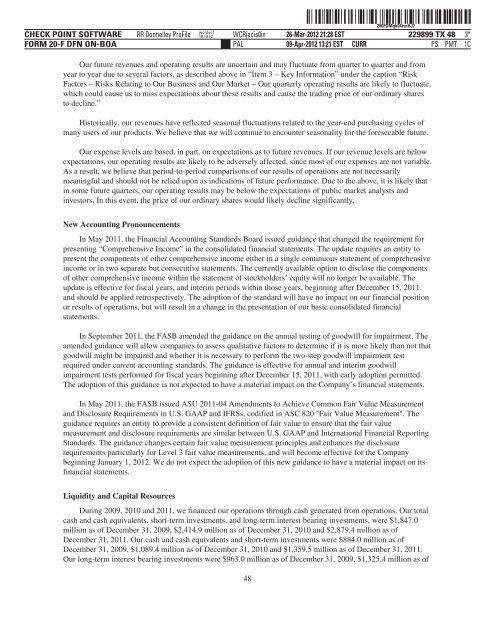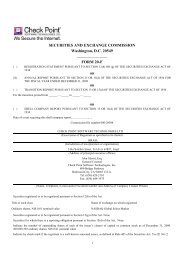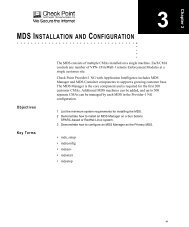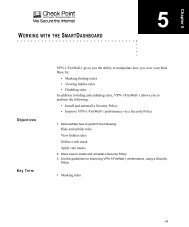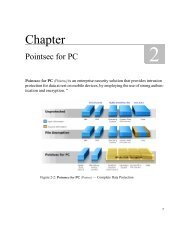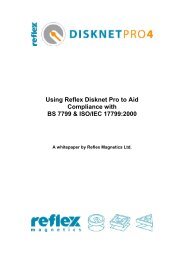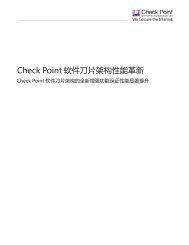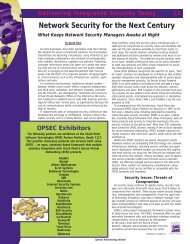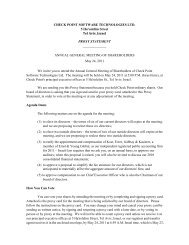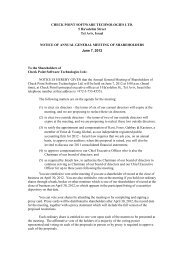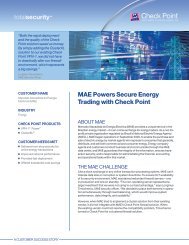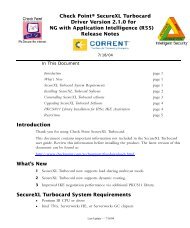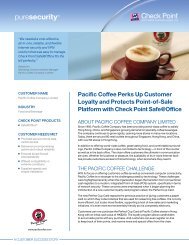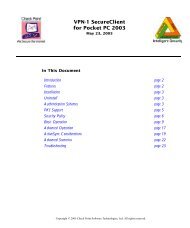printmgr file
printmgr file
printmgr file
Create successful ePaper yourself
Turn your PDF publications into a flip-book with our unique Google optimized e-Paper software.
CHECK POINT SOFTWARE<br />
FORM 20-F DFN ON-BOA<br />
ˆ200FDMqk04ivnVJ71Š<br />
200FDMqk04ivnVJ7<br />
RR Donnelley ProFile wcrdoc1<br />
10.10.12 WCRjacis0in 26-Mar-2012 21:28 EST<br />
229899 TX 48 3*<br />
PAL<br />
09-Apr-2012 13:21 EST CURR<br />
PS PMT 1C<br />
Our future revenues and operating results are uncertain and may fluctuate from quarter to quarter and from<br />
year to year due to several factors, as described above in “Item 3 – Key Information” under the caption “Risk<br />
Factors – Risks Relating to Our Business and Our Market – Our quarterly operating results are likely to fluctuate,<br />
which could cause us to miss expectations about these results and cause the trading price of our ordinary shares<br />
to decline.”<br />
Historically, our revenues have reflected seasonal fluctuations related to the year-end purchasing cycles of<br />
many users of our products. We believe that we will continue to encounter seasonality for the foreseeable future.<br />
Our expense levels are based, in part, on expectations as to future revenues. If our revenue levels are below<br />
expectations, our operating results are likely to be adversely affected, since most of our expenses are not variable.<br />
As a result, we believe that period-to-period comparisons of our results of operations are not necessarily<br />
meaningful and should not be relied upon as indications of future performance. Due to the above, it is likely that<br />
in some future quarters, our operating results may be below the expectations of public market analysts and<br />
investors. In this event, the price of our ordinary shares would likely decline significantly.<br />
New Accounting Pronouncements<br />
In May 2011, the Financial Accounting Standards Board issued guidance that changed the requirement for<br />
presenting “Comprehensive Income” in the consolidated financial statements. The update requires an entity to<br />
present the components of other comprehensive income either in a single continuous statement of comprehensive<br />
income or in two separate but consecutive statements. The currently available option to disclose the components<br />
of other comprehensive income within the statement of stockholders’ equity will no longer be available. The<br />
update is effective for fiscal years, and interim periods within those years, beginning after December 15, 2011<br />
and should be applied retrospectively. The adoption of the standard will have no impact on our financial position<br />
or results of operations, but will result in a change in the presentation of our basic consolidated financial<br />
statements.<br />
In September 2011, the FASB amended the guidance on the annual testing of goodwill for impairment. The<br />
amended guidance will allow companies to assess qualitative factors to determine if it is more likely than not that<br />
goodwill might be impaired and whether it is necessary to perform the two-step goodwill impairment test<br />
required under current accounting standards. The guidance is effective for annual and interim goodwill<br />
impairment tests performed for fiscal years beginning after December 15, 2011, with early adoption permitted.<br />
The adoption of this guidance is not expected to have a material impact on the Company’s financial statements.<br />
In May 2011, the FASB issued ASU 2011-04 Amendments to Achieve Common Fair Value Measurement<br />
and Disclosure Requirements in U.S. GAAP and IFRSs, codified in ASC 820 "Fair Value Measurement". The<br />
guidance requires an entity to provide a consistent definition of fair value to ensure that the fair value<br />
measurement and disclosure requirements are similar between U.S. GAAP and International Financial Reporting<br />
Standards. The guidance changes certain fair value measurement principles and enhances the disclosure<br />
requirements particularly for Level 3 fair value measurements, and will become effective for the Company<br />
beginning January 1, 2012. We do not expect the adoption of this new guidance to have a material impact on its<br />
financial statements.<br />
Liquidity and Capital Resources<br />
During 2009, 2010 and 2011, we financed our operations through cash generated from operations. Our total<br />
cash and cash equivalents, short-term investments, and long-term interest bearing investments, were $1,847.0<br />
million as of December 31, 2009, $2,414.9 million as of December 31, 2010 and $2,879.4 million as of<br />
December 31, 2011. Our cash and cash equivalents and short-term investments were $884.0 million as of<br />
December 31, 2009, $1,089.4 million as of December 31, 2010 and $1,359.5 million as of December 31, 2011.<br />
Our long-term interest bearing investments were $963.0 million as of December 31, 2009, $1,325.4 million as of<br />
48


